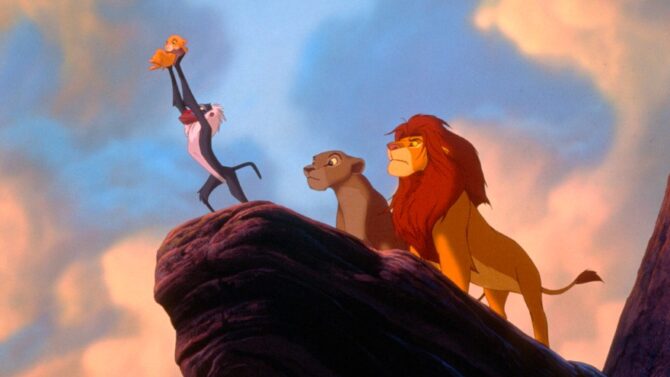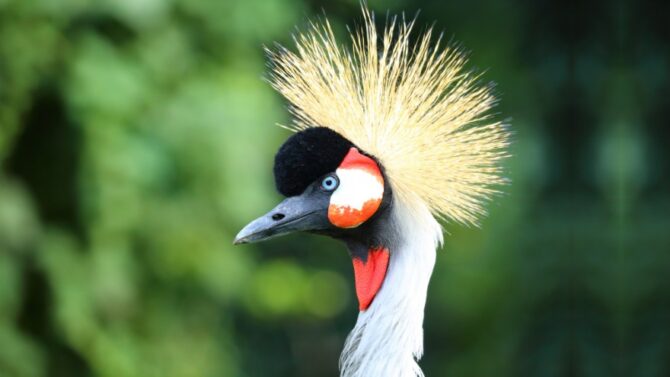Egypt is a country with a rich history, diverse wildlife, and home to some of the most unique and fascinating creatures in the world.
However, amidst the beauty and wonder of the land of the pharaohs, there also exists a group of animals that are feared for their deadly capabilities.
From venomous snakes to fierce predators, the most dangerous animals in Egypt can pose a significant threat to humans and other animals alike.
In this article, we will explore the top 10 deadliest wildlife in Egypt and learn how to stay safe when encountering them.
So, whether you’re a local or a visitor, read on to discover more about these deadly animals and how to avoid them.
What are the Most Dangerous Animals in Egypt?
1. Nile Crocodile

- Scientific name: Crocodylus niloticus
- Habitat: the Nile, freshwater marshes, swamps, rivers
- Threats: Large, powerful predators with a strong bite, known to attack humans when threatened or defending their territory
First on our list is one of the most dangerous predators in Egypt and many other African countries.
The Nile crocodile can be found in more than 20 of these countries, and it weighs up to 1000 pounds! To say that it is big would be an understatement.
Added to its size are strong teeth, muscles, and a high prey drive. It is an apex predator and like many other crocodile species, won’t need to be provoked before it attacks a human.
Males are more likely to attack than females, but you don’t need to know the gender of any Nike crocodile you see before acting.
Avoid this reptile by all means, especially when visiting the Nile. It is good at camouflage, so explore with a guide if possible. In case of any attack, get immediate treatment.
2. Common House Mosquito

- Scientific name: Culex pipiens
- Habitat: Wet, humid, temperate
- Threats: Disease-carrying bloodsuckers that can transmit viruses such as Zika, dengue fever, and West Nile virus
Mosquitoes are widespread in Africa because of the humid and tropical climate, and they are considered because they are disease carriers.
They are responsible for the infamous malaria, the disease that killed more than 600,000 people in 2020, according to statistics.
Malaria isn’t common in Egypt, but the common house mosquito—one of many other mosquito species in Egypt—is also a carrier of diseases, including the West Nile river and Japanese encephalitis.
Be sure to wear long sleeves and trousers. Also, go along with a mosquito repellent.
3. Common Lionfish
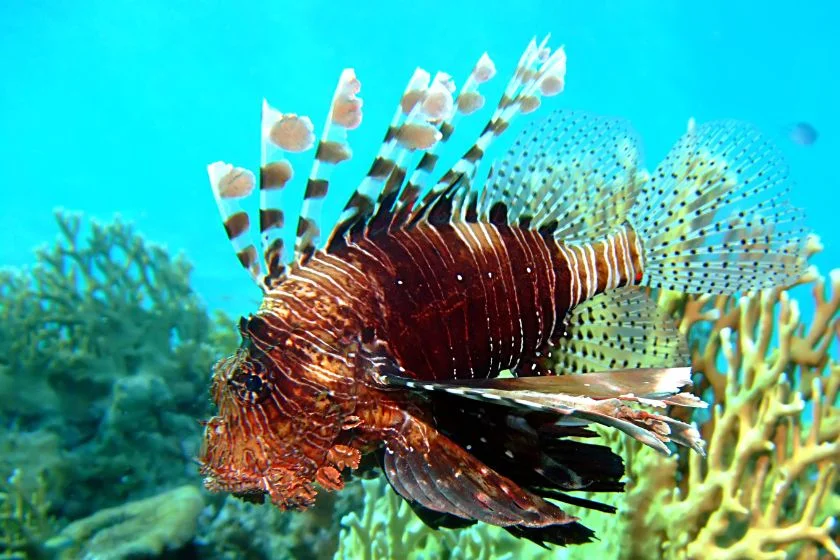
- Scientific name: Pterois miles
- Habitat: marine habitats
- Threats: Venomous spines that can cause extreme pain, swelling, and even paralysis
Most people would be surprised to know that the lionfish can be affiliated with Egypt because it is usually found in countries like Dominican Republic, Brazil, and the United States.
However, some species have been found in the red sea, one of which is the common lionfish.
If any of your activities involve getting into the red sea, you should be cautious of the lionfish as it is very dangerous.
An encounter with the lionfish can leave you in bad condition. It has dorsal fins, eleven in number, and all these fins are venomous.
Symptoms include seizures, fever, and sweats. In extreme cases, it can lead to death.
4. Hippopotamus
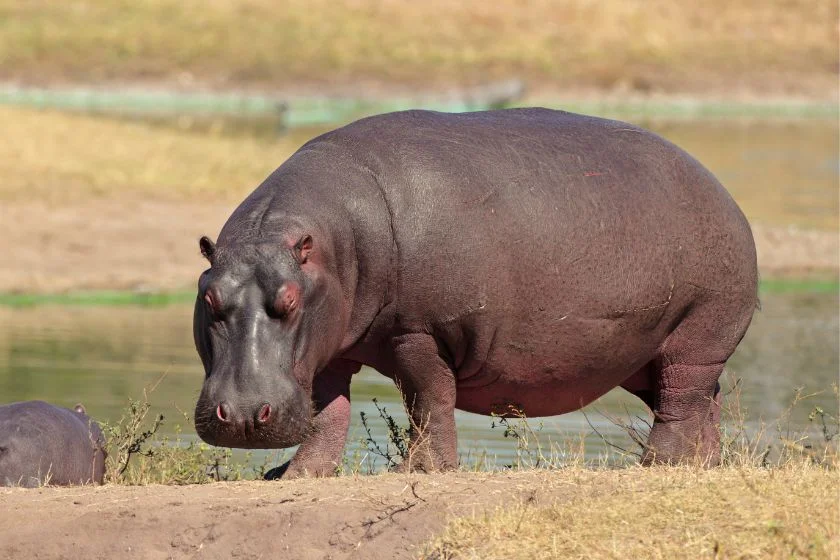
- Scientific name: Hippopotamus amphibius
- Habitat: Rivers, lakes
- Threats: Large, aggressive animals that can be unpredictable and dangerous, particularly when defending their territory or young
Also called the common hippopotamus or the river hippopotamus, this semi-aquatic mammal is just as dangerous as it appears.
In Egypt, it can be found close to the river Nile and some other wetlands.
The statistics are troubling. Hippos are credited for over 500 deaths in Africa each year.
It is hard to escape those large jaws, and just like the crocodile, the hippo should be avoided. They are herbivores, however, and won’t attack if not provoked.
5. Saharan Striped Polecat

- Scientific name: Ictoynx libycus
- Habitat: Deserts, mountains
- Threats: Known for their strong and unpleasant odor, can spray a noxious fluid when threatened
The Saharan striped polecat is also known as the Libyan striped weasels, and though it doesn’t look dangerous, do not judge this animal by its looks.
An attack from this creature puts you at risk of infection and toxic bacteria. The Saharan striped polecat tends to mind its business, but it will attack if provoked.
When threatened, the Saharan striped polecat releases a stinking fume similar to skunks.
You should avoid any area where the Sahara striped polecat can be found. If you get attacked, get medical treatments immediately.
6. Caracal
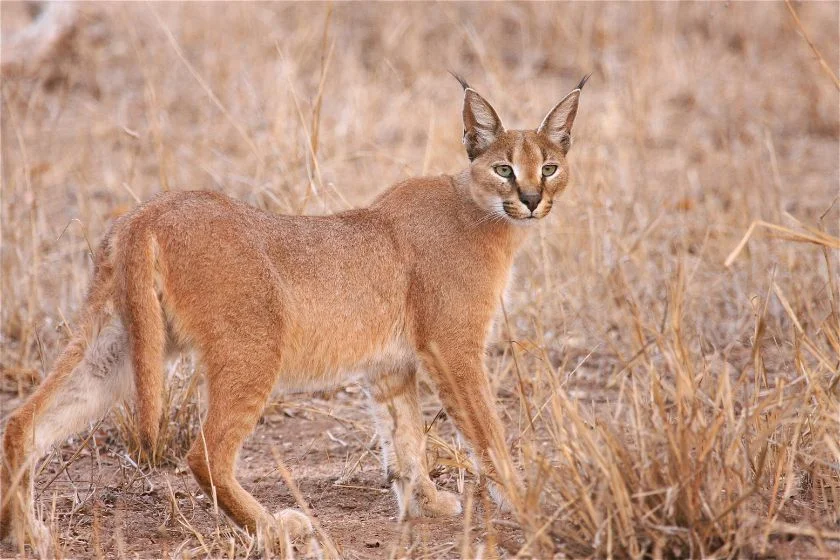
- Scientific name: Caracal caracal
- Habitat: Forests, savannas, semi-deserts
- Threats: Agile predators known for their powerful leaps and sharp claws, can attack humans if provoked or cornered
The caracal is a member of the cat family, known as the Felidae.
It is described as a “desert lynx,” and it looks like a creature that should be engraved in Ancient Egyptian mythology.
Exotic as it is, the caracal is a dangerous mammal. Caracals don’t meet humans regularly, so it is wary of us and elusive.
If you don’t threaten them or get too close, they may not attack.
However, the caracal would ward you off like a cat and attack if it feels provoked, especially when it has young ones or during mating season.
7. Black Desert Cobra
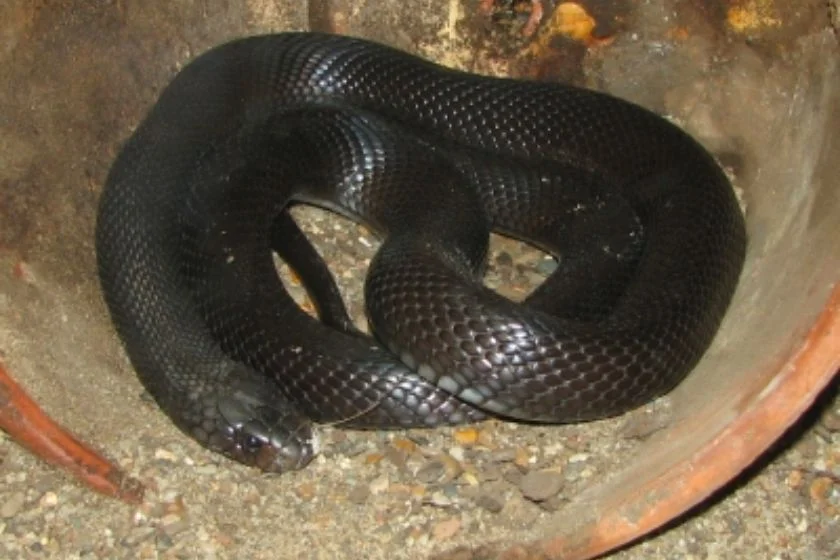
- Scientific name: Walterinnesia aegyptia
- Habitat: Desert
- Threats: Venomous snake with potentially deadly neurotoxic venom, capable of striking with great accuracy
The black desert cobra is also called the desert cobra or the desert black snake, and the aegyptia in its name points towards where it came from, and that’s Egypt.
It can also be found in places like Israel, Saudi Arabia, Lebanon, and Jordan. Similar to other cobras, the black desert cobra poses an enormous danger.
The black desert cobra is highly venomous, and the venom has been known to cause symptoms like vomiting, nausea, and loss of consciousness.
The venom is known to contain properties that are both neurotoxic and cytotoxic.
8. Wild Boars
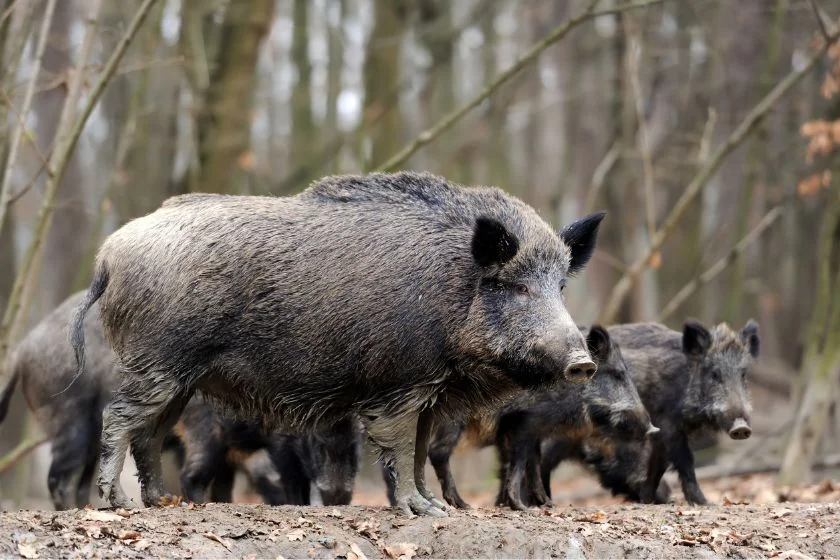
- Scientific name: Sus scrofa
- Habitat: Jungles, grasslands
- Threats: Large, aggressive animals with sharp tusks that can cause serious injury or death, known to attack humans if threatened or cornered
The wild boar is considered a hybrid of domestic pigs and native pigs, and if you’ve ever encountered a domestic pig, you’d wonder why wild boars are considered dangerous.
While they are omnivores, wild boars have encountered many humans who hunted them. As such, they have developed a negative reaction.
Wild boars are also territorial, especially when they have piglets. The combination of these factors makes them unstable, and they can attack without provocation.
If you meet a wild boar, remain quiet and slowly move away. Do not approach or startle it.
9. Aardvark
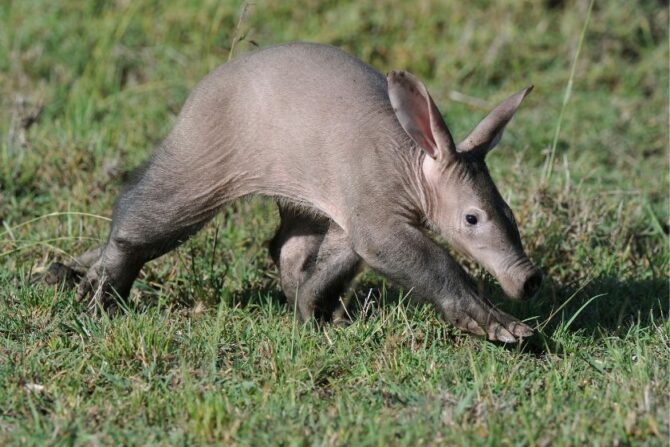
- Scientific name: Orycteropus afer
- Habitat: Grasslands, rainforests, woodlands
- Threats: Can attack if they feel threatened or cornered
The aardvark is native to Africa, and it is known to burrow in the soil and pick out insects, especially termites.
Their mouth and tongue are structured to easily pick out these termites.
Like some other animals on this list, the aardvark doesn’t look dangerous on the surface. However, there are risks involved.
This animal carries a lot of deadly bacteria, pathogens, and viruses, all of which cause numerous diseases. Its attacks wouldn’t only get you injured, but you might also contact these diseases.
If you ever get scratched by an aardvark, contact the nearest hospital immediately.
10. Egyptian Mongoose
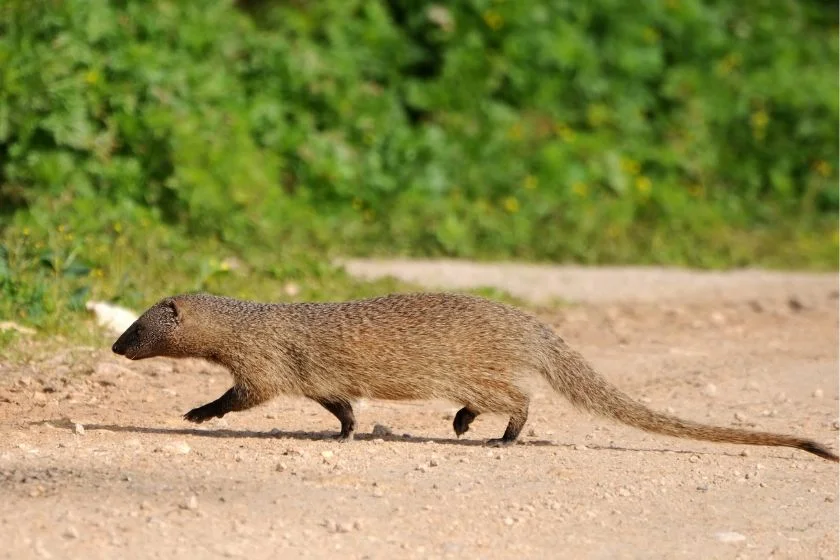
- Scientific name: Herpestes ichneumon
- Habitat: Swamp, marshes
- Threats: Agile predators that can be aggressive towards humans if provoked, known to attack snakes and other animals
The Egyptian mongoose is common in Africa but can be found in other places as well.
It is classified as Least Concern because of its widespread nature, but in Egypt, it dwindled in population.
The Egyptian mongoose can be found around water bodies, especially where there are swamps and marshes.
The Egyptian mongoose is not as dangerous as other animals on this list.
However, it carries a lot of pathogens and viruses, all of which can be harmful to a human. Similar to the animals we’ve seen, keep your distance from the Egyptian mongoose.
Egypt Wildlife Safety Tips
There’s a lot to experience and explore when you visit Egypt, but you can’t afford to be reckless while doing so. This is especially true when looking into wildlife.
Here are some safety tips to help you have a good time without endangering your health:
- Wear closed shoes and clothes that cover every part of your body, and do not stick your hand into any nook and cranny.
- Do not touch any stone or rock when you want to turn it over. Instead, use a stick and stand some distance away.
- Have a good bug repellent and insecticide handy for the bugs and mosquitoes around. While many of them aren’t life-threatening, they should not be underestimated.
- Stay away from animals like crocodiles and wild boars. Do not stand too close to any other animal, even those that don’t appear on our list.
Frequently Asked Questions
What is the deadliest animal in Egypt?
The deadliest animal in Egypt is, without a doubt, the Nile crocodile, which is one of the largest crocodile species alive today. It is responsible for a large number of deaths and will attack without provocation.
What was the most dangerous animal in ancient Egypt?
From all indications, the three most dangerous animals are crocodiles, hippopotami, and lions.
This is evident in the crocodile head diety named Ammit, known as the “devourer of the dead”. Ammit was said to have a crocodile head and a body.
What predators are in Egypt?
There are a good number of predators in Egypt. Some of them are the Egyptian mongoose, Nile crocodile, and Egyptian cobra.
What big animals are in Egypt?
The Nile crocodile is one of the biggest animals in Egypt, but there are some big ones, like camels and buffalos. They may not be dangerous, but they are certainly large!
Wrap Up
The Egyptian fauna is a sight to see amidst the pyramids and other tourist attractions.
However, we should be cautious around these most dangerous animals in Egypt.
Some don’t need to be provoked before they attack, while others would only be dangerous if threatened.
In any case, adhere to any instructions given by a tour guide, and follow other tips to stay safe.
Up Next
- Man-Eaters: Top 15 Deadly Animals That Eat Humans
- Top 20 Most Dangerous Animals in the World
- 10 Most Venomous Snakes In The World (Poisonous & Dangerous)

